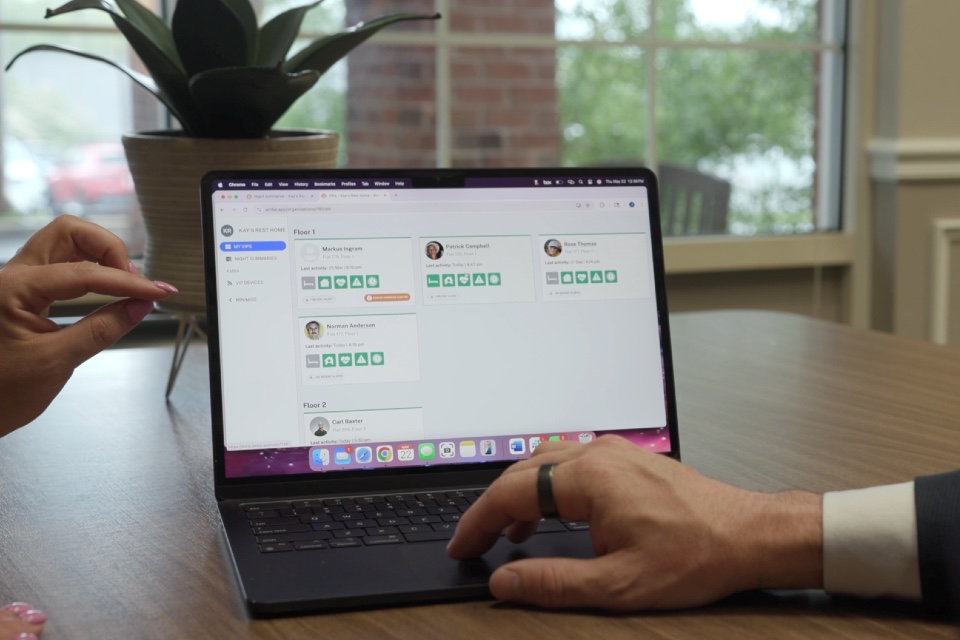Integrating digital solutions into health and care settings is no longer a luxury but a necessity. Claire Hunter, Group Quality & Compliance Manager at Healthcare Homes, reflects on the care provider’s successful route to digitised care planning, and shares some guidance for care homes embarking on their own tech journey…
Healthcare Homes was founded in 2005. As a group, we own and operate almost 50 residential, nursing and specialist care homes across the South and East of England. Our mission has always been to deliver exceptional care where dignity is respected, talents and interests are nurtured, and residents are cared for like family.
We embarked on our digital transformation journey in late 2021, as part of a wider transformation project which identified the need for an effective e-care planning and digital record system.
The pandemic in some ways accelerated the urgency, but we were already replacing back-office systems before this point. We had a clear vision to remove paper, maintain comprehensive record keeping and enhance reporting, and we wanted online access to care records to increase provider oversight and aid effective management.
Measuring outcomes
Since the roll-out of KareInn’s digital care planning software in our pilot homes, we now have a comprehensive insight of the care that is being delivered. We can spot relevant trends about the level of support and care requirements we provide, and we have a fully mobile progressive web-app which is easy for our front-line staff to use.
This has contributed to Maynell House, based in Suffolk, enhancing its existing Good overall rating by achieving a Good under the Responsive KLOE (previously Requires Improvement).
Adhering to the CQC’s key lines of enquiry (KLOE), its report found that staff were available to provide support where required, were recruited safely, were caring in their interactions with residents, and people’s independence, privacy and dignity were promoted and respected. Care records demonstrated residents’ views had been sought, and care plans identified their likes, dislikes and preferences relating to how they wished to be cared for.
Paying close attention to new trends and the changing needs of the sector as it continues along its quest to modernise is critical, and this is how we turned our insight into measurable success. Here are my three pieces of advice for care homes embarking on their digital roadmap.
Don’t skip ahead of hardware and infrastructure
When starting your digital journey, make sure you get your hardware and infrastructure in the right place, first.
Review your devices and ensure they are appropriate for the people who are going to use them. This doesn’t need to be a costly process. We used our pilot process to also test different kits, helping to save time and keep costs down. It was determined that our nurses’ stations are better suited to laptops, whereas the activity coordinators have tablets. When delivering care directly to residents, we use smartphones. Crucially, you are going to need a reliable WIFI signal.
No unknowns – bring your teams into the loop
When preparing for our pilot programme, we set up meetings with care home managers so they could understand what was expected of them, and so we could work in a space where there were no unknowns. We had around four months for Q&A opportunities, and we believe this clarity and transparency of the process is what has led to such positivity from our teams.
Factor in mixed tech abilities
The path to digital is a learning curve for many, and for some it’s steeper than others. Not everyone is going to be up to speed on all things digital care, and some people who work in our industry have very limited knowledge of how to use different devices and software.
What matters the most here is how you respond to people’s hesitance, anxiety and resistance to change. If your workforce is managed and supported in the right way, not only will they thrive in their role, but they will also become your champions too. You can empower them within their role and provide a sense of great personal achievement.
Our vision to go paperless is being realised as we roll-out our digital care planning system across more of our homes. The technology is there to help the sector constantly and collaboratively improve the care that is delivered throughout our care homes. As others progress further down the digital path, we’ll see more empowered workforces, increased efficiencies and enhanced quality of care, right across the entire sector.
Photo by Glenn Carstens-Peters on Unsplash






